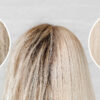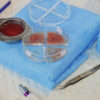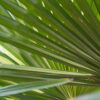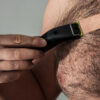Healthy and shiny hair is a dream for many people. Unfortunately, harsh weather conditions and improper care cause the hair to start looking unsightly and deteriorate. Care in a conscious way is first and foremost tailored to the needs of a particular person. It is therefore important to deliberately and not randomly select products that contain certain ingredients in the right proportions.
PEH is abbreviated from the initial letters of three groups of active ingredients. These are proteins, which fill in hair defects, emollients, which are fatty substances that form an occlusion on the surface of the hair, and humectants – moisturizing ingredients. These substances are the 3 pillars of hair care. It is worth using them if you want to improve the condition of your hair and achieve better hair care results.
Despite appearances, PEH balance in hair care does not mean the same ratio of three ingredients. Everyone’s level of balance can vary and depends on many factors, such as the porosity of the hair, their needs and what they like. Some hair needs mainly emollients, while proteins will be a rare addition to hair care. Others, however, will require primarily proteins and humectants, while emollients will play a tertiary role. Like skin, each hair is also different and requires testing cosmetics to determine PEH balance.
- 1. When do we say cosmetics are PEH?
- 2. What results in an imbalanced PEH?
- 3. What is the role of emollients and what happens when there are not enough of them?
- 4. What is the role of proteins and what happens when there are not enough of them?
- 5. What is the role of humectants and what happens when there are not enough of them?
- 6. How do you achieve PEH balance?
- 7. Why is PEH balance so important in hair care?
When do we say cosmetics are PEH?
It depends on the ingredients that are in the product. Sometimes a conditioner, for example, has as many proteins as emollients – in which case it is referred to as a PE conditioner. There are many possibilities, and chances are that one will come across a PEH cosmetic – that is, one that combines all groups.
Proteins include a group of animal origin such as albumen, amino acids, casein, collagen, elastin, hydrolyzed collagen, hydrolyzed egg protein, hydrolyzed elastin, hydrolyzed keratin, hydrolyzed milk protein, hydrolyzed silk, among others. Among the plant-based ingredients are, for example. hydrolyzed corn protein, hydrolyzed oil protein, hydrolyzed soy protein, hydrolyzedwheat protein.
Emollients come in the form of oils and butters and fatty alcohols – cetearyl alcohol, cetyl alcohol, myristyl alcohol, sterayl alcohol. This group also includes silicones – amodimethicone, dimethicone, dimethicol, polyquaternium, and strong emollients – lanolin, paraffin, parrafinum liquidum, wax.
The group of humectants includes such substances as allantoin, algae extract, aloe barbadenis leaf juice, betaine, dipotassium, fructose, glycerin, honey, mannitol, niacinamide, sodium hyaluronate, among others.
What results in an imbalanced PEH?
The effects depend on which component has become dominant. Hair that has disturbed PEH is most often frizzy, dry, dull, easily broken and electrified, or on the contrary, it is weighed down, greasy and appears unwashed.
What is the role of emollients and what happens when there are not enough of them?
Emollients are responsible for surrounding the hair and maintaining a proper barrier. The occlusive layer protects the hair from damage – including UV radiation, locks in strengthening and moisturizing ingredients in the hair, causes smoothing of the cuticle and adds shine to the hair. Emollients also protect the ends of the hair from frizz and splitting. The most common emollients include oils (argan, coconut), butters, waxes, fatty alcohols, silicones, paraffin, lanolin. These substances are divided into those with strong effects and those with gentle effects.
Emollients are found in many cosmetics and food products (butter, sunflower oil, oil). This substance is found in every conditioner or hair mask, so emollients are common in hair care.
The use of emollients should be matched to the current state of the hair – it is a good idea to select them according to the degree of porosity. With the right amount of emollients, hair regains its smoothness and shine, and is weighed down to prevent frizz. Too much of it can make hair look neglected and oily. When this ingredient is in short supply, hair becomes static, frizzy and loses its shine.
What is the role of proteins and what happens when there are not enough of them?
Proteins are simple proteins made up of ammonia. They are the natural building blocks of hair. It is thanks to proteins that small defects in the structure of the hair are replenished, because they rebuild damage – they promote regeneration. They are referred to as cement or replenisher and are used in a broad treatment to restore hair. Proteins, therefore, have a primary role – to fill in the gaps, increase strength and enhance the natural curl of the hair.
The most popular protein proteins include. Silk, collagen, keratin, elastin, wheat protein. A distinction is made between strong proteins and more delicate ones (mainly plant proteins like soy protein).
The use of proteins in hair care activities is determined by the porosity of the hair. Hair distinguished by low porosity can lose its volume under the influence of excess protein. High porosity hair, on the other hand, absorbs proteins much better, although their styling can be more challenging.
Protein deficiency results in hair that is static, dull, lacking volume, with weakened curl in the case of curly hair. Excess protein, on the other hand, causes dull, stiff hair.
What is the role of humectants and what happens when there are not enough of them?
Humectants are hygroscopic substances whose function is to attract water molecules and store it in the hair and skin. They are usually small particles that easily penetrate the hair or skin structure. Humectants are used as ingredients to regulate the appropriate level of hydration. They require the use of emollients, as used solo or too often they can cause excessive tension and dryness of the skin, as well as tightening of the hair. Thanks to humectants, hair gains moisture and elasticity. They are also less prone to breakage and splitting.
The most popular humectants include. Urea, hyaluronic acid, aloe vera, glycerin, d-panthenol, niacinamide. A homemade humectant is also honey. Humectants, like emollients, are divided into strong (honey) and gentle (linseed gel).
The use of humectants depends on the weather and humidity. These substances in less than ideal weather cause moisture to be trapped from the environment, binding it in the hair. As a result, the scales of the hair open up and the hair is rough and moody. On the other hand, on dry days, they release moisture into the environment, while giving a taut effect on the head. For this reason, it is recommended to use humectants during moderate temperatures.
A deficiency of humectants causes hair to become dry, and an excess of humectants results in frizzy, dry and dull hair.
How do you achieve PEH balance?
The first step, which guarantees half the success, is to know the porosity of the hair. Determining porosity can be difficult and takes time, but just knowing that a particular hair is more or less porous will make choosing the right care easier.
The term refers to the degree of damage to the hair, or more specifically to the deviation of the hair scales from the hair shaft. On this basis, hair is distinguished:
- Low-porous – with closed scales, smooth and shiny texture. This is the least problematic hair type in terms of care. Low-porous hair is usually distinguished by its thickness and stiffness. As a result, they are more difficult to style. Proper care of this type of hair is based on the effect of increasing volume and bouncing the hair from the roots.
- Highly porous – are distinguished by deflected scales, more dull and sensitized. The opening of the scales makes the hair susceptible to external influences and temperature. They tend to be brittle, rough and brittle. They are characterized by significant dryness at the end or from the middle of their length. They also tend to fluff up when exposed to humid air.
- Medium-porous – have gently tilted scales. Hair is fine and thin with a tendency to static, wavy and frizzy when exposed to moisture. They are also susceptible to styling. They require reconstruction, strengthening and protection.
Check out how to properly determine the porosity of the hair.The second issue is the choice of PEH substances. Knowing that a particular hair needs emollients is not enough to use the first better cosmetic. This is especially true for oils, as not every oil will work for every hair type. The situation is similar with proteins – low- and medium-porous hair likes amino acids, keratin and hydrolyzed proteins, while high-porous hair likes collagen, elastin and non-hydrolyzed proteins.
With such knowledge, all that is left is to test, try and observe. This is the only way toknow and achieve your own PEH balance, because it is different for everyone.
Why is PEH balance so important in hair care?
Emollients, humectants and proteins are the most important ingredients found in hair care products. Shampoos, conditioners and masks are the few products that contain these very substances.
Everyone’s hair is different – not only in terms of appearance, but also in terms of its susceptibility to the ingestion of various substances. What will be a great treatment for some may prove to be a big problem for others. Thick, naturally healthy hair to a shampoo with too much protein, for example, may react with tangling and frizz. Thus, the right choice of the amount of emollients, humectants and proteins in hair care allows you to take care of the condition and healthy appearance of hair and scalp. That’s why, when planning hair care, it is worth knowing which preparations to pay attention to.
Ensuring PEH(Protein-Emollients-Humectants) balance is how hair gets the ingredients it needs. Before embarking on the adventure of mixing various elements yourself, it is useful to know what type of hair you have. A diagram that describes the mutual drift of the effects of different components can be useful:
- Humectants lead to protein balancing,
- Proteins and humectants cause balancing of emollients,
- Emollients guarantee the final cut of the formulation’s ingredients, “closing” their action.
So it is recommended to try a variety of cosmetics in varying doses. You may then find that your hair particularly likes a single ingredient. Initially, however, it is worth trying formulations with fewer ingredients, or prepare a mask or conditioner yourself.





